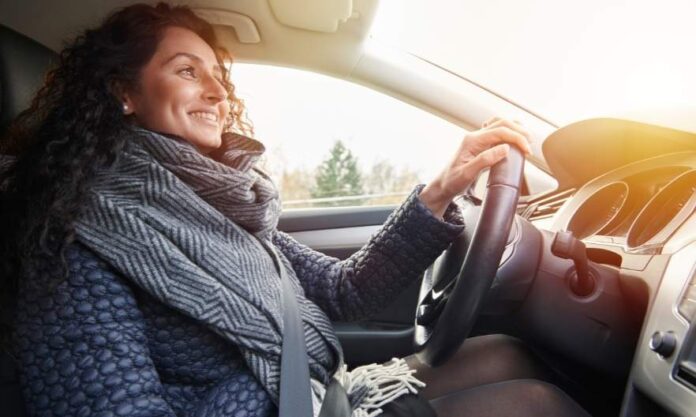We are sharing a list of some good tricks for passing the German driver’s license practical test but first of all, make sure you are fit and healthy when taking your test. Remember, if you’re nervous about passing your practical driving test, there’s no need to be – follow these 14 tips to pass the practical driving test in Germany and make sure you give yourself every chance of success!
Never drive in Germany without a valid driver’s license. There are different types of driving licenses in Germany and there are various penalties if you are caught driving in Germany without a valid driver’s license.
There are lots of road rules and safe driving practices that must be mastered before you get on the road without an instructor by your side. This article covers some of the most essential driving tips that can help any driver improve their skills and make them safer on the road.
Tips to Pass Practical Driving Test in Germany
Stay Calm
One of the most important ways you can pass your driving test is by staying calm and avoiding any risky behaviour. If you get nervous behind the wheel, chances are you’ll make mistakes that will put your driving instructor’s patience to the test.
If you feel yourself starting to panic, try taking a few deep breaths. Remember: if you want to pass your practical driving test, stay calm!
- No rush
- Drive as you learned in driving school – Don’t do anything new.
- Don’t drive crazy slow because you are “careful”.
Check Your Mirrors
One of the most valuable driving tips to pass a practical driving test is to check the mirrors regularly. One of the most valuable driving tips to pass the practical driving test is to check the mirrors regularly. As you drive down the road, check your mirrors to make sure that you’re aware of what’s happening behind you. Remember to glance in the inside mirror every few seconds and make sure that there’s nothing unusual behind you. If there is, then signal to let other drivers know what you’re doing.
For example, if a vehicle has been following closely behind you for some time and it looks like they want to move over into your lane, it might be a good idea to use your turn signal so that they know where you’ll be going.
- Look into the inside mirrors from time to time.
- Every 10 seconds or after you check your speedometer.
- Don’t be stiff – you are not a muppet 😉
Tight Spot – Drive Slow
- You are not sure if you fit? better wait.
- Corner with bad vision? drive slow.
- Multiple parking cars? slow.
- Distance = 1 meter to cars, .5 meters to pedestrians, bicycles, etc.
Reversing
When reversing, you should drive slowly and not rush. Keep your eyes on what is behind you by checking your rear-view mirror as well as side-view mirrors. Look both ways before changing lanes or merging to ensure that there are no cars around you. If it’s safe to reverse, check your surroundings and drive backwards. To avoid having to reverse, remember to follow all traffic signs when driving forwards, such as stop signs and traffic lights.
- Always slow.
- One of the most dangerous manoeuvres because of bad vision.
- No problem when you go slow.
- Precision and safety before speed.
Signals
One of your main responsibilities is to use your signals properly. Be sure to check and make sure that any vehicles near you have enough room to manoeuvre and aren’t close enough to cause a collision if you signal a turn or lane change.
You have to be aware of when you have to use a headlight flasher in Germany.

And don’t forget to signal when turning, merging, or exiting a highway or off-ramp. Signal even if there are no other cars around; you never know when someone may be coming up from behind who didn’t see your signal—or who might simply ignore your signal.
- Always use the signals when you turn in the direction of incoming traffic.
- Signals when changing back as you learned it.
- After overtaking.
- Turn signals early on before changing lanes.
- Better once too much than too seldom.
First Look, Then Steer
Experienced drivers and novices alike will agree that the first rule of driving is never to look and steer at the same time. But what does that really mean? Sticking your head out the window when you drive is a sure way to be sideswiped by another driver. It also distracts your attention from where you’re going.
If you have to look ahead, check the road behind you before turning around and make sure there are no cars approaching on either side. Adjust your mirrors so they show more than just the side of your car and roll down your windows if necessary; always keep one hand on the wheel at all times.
- Never look and steer at the same time.
- Look over your shoulder only to check the blind spot.
- Only a short look, otherwise you don’t see where are you going 😉
How to Prepare for the German Practical Driving Test
Start Early
It’s one of the underestimated tricks for passing the German driver’s license practical test. I have shared my personal experience and the questions that were asked during the practical driving test.
If you’re planning on taking your driving test soon, start early! The more time you have to prepare, the more likely you are to succeed. Practice is one of those things that requires time and energy investment in order for it to pay off. If you feel like you don’t have enough hours in a day or if your schedule is packed with commitments, ask a friend or family member if they can help you out with some practice sessions.

Of course, one thing’s for sure: The earlier you begin, even if only a few weeks before your test date, the better off you’ll be when it comes down to it. A little preparation goes a long way, so take advantage of all available resources and get started as soon as possible. Good luck!
Practice in an Area with Lots of Different Road Types
If you want to have the best chance at passing your practical driving test on the first try, then practice in an area with lots of different types of roads. If you’re taking your driving test on a closed track, then great. But if you need to take it out on public roads, make sure you’ve practised in various conditions. There’s a big difference between driving down a quiet country lane and roaring along busy main roads with lots of lights.
Know where all of your controls are: If it’s been a while since you sat in one of those awful, tiny learner-driver cars, figure out exactly where everything is now – but don’t rely on muscle memory. Get up close and personal with every control so that when you’re sitting at your real driving test, you don’t have time to think about it!
Learn the Common Road Signs and Their Meanings
Signaling is an important aspect of passing your practical driving test. If you don’t know what each sign means, you could easily miss a turn and fail your test (or worse). One common mistake is failing to check for street signs or make a turn because you failed to notice a change in direction. Familiarize yourself with these signs and pay attention.
Being able to quickly identify changes in traffic flow will help you avoid accidents on your road tests. There are two types of changes:
Focus on Your Car Control Skills
Whether you’re turning, changing lanes, or manoeuvring through traffic, your car control skills need to be on point for you to pass your driving test. To build your car control skills, it’s important that you spend a good deal of time practising in parking lots and on quiet side streets.
It might seem boring at first but when you think about it: How else will you really prepare for getting behind that wheel? By spending as much time as possible learning how to operate a vehicle correctly. Otherwise, what are they going to grade? Your ability to parallel park? Not exactly—these practical manoeuvres won’t count toward your final score.
Think Ahead, but Don’t Think Too Far Ahead
Thinking of all possible outcomes and scenarios before you begin driving is a great way to make sure you’re prepared for whatever comes your way. But over-planning can have its downsides: If you spend too much time thinking about things that might happen in the future, it could compromise your ability to react when they actually do.
Anticipating certain driving situations can be helpful, but don’t let fear or paranoia creep into your thoughts—you want your anxiety level high enough so that you’re alert and aware of everything going on around you (without panicking), not so high that it inhibits your ability to drive effectively.
Set Realistic Goals
If you fail, there’s no point beating yourself up. All you can do is try again (and remember to leave more time next time). If your goal was unrealistic from the start, however, then there are lessons to be learned. First and foremost: In terms of learning how to drive, practice makes perfect—but that doesn’t mean setting a new goal with an equally ambitious deadline.
When it comes down to it, car driving is a life skill. It’s not something you need to pass in order to get on with your life. It’s something you should learn so that you can enjoy getting around for years to come.
Set realistic goals and take plenty of time to master each step along the way. This will help ensure that passing your test becomes a natural part of growing into adulthood, rather than a stressful hurdle on which all else hinges.
Take Your Time, It’s Going to Be Ok
Whether you’re taking a driving test for your driver’s license or you’re just out on a practice run, calm down and relax. Take as much time as you need with your instructor (or in solitude) at every turn and junction.
There are going to be other cars, bikes, pedestrians, and usually a lot of them, so make sure you know how far you can go, how fast you can go there, where all of your mirrors are pointing and what they show, etc., before moving forward. If nothing else, take your time; it will pay off!
Out of these fourteen tips, which one is your favourite for passing the practical driving test in Germany? If you want to know the process of getting a driving license in Germany. Here is everything you need to know to get your driving license in Germany.






